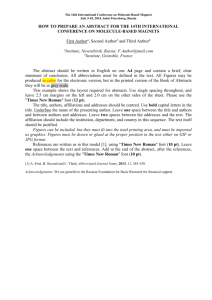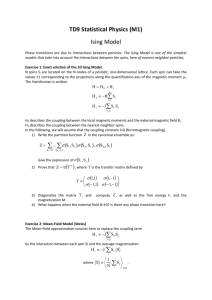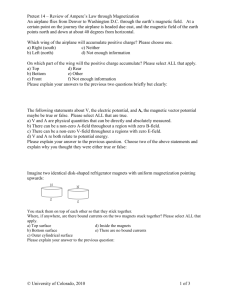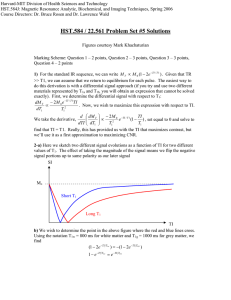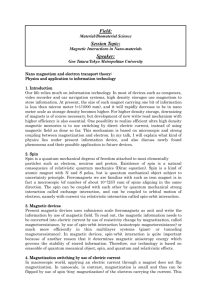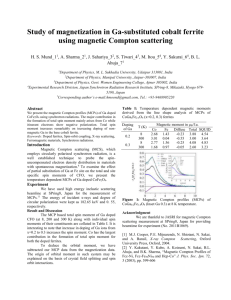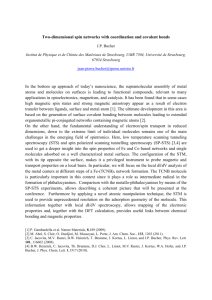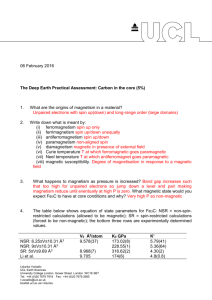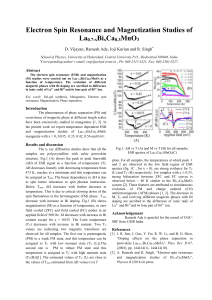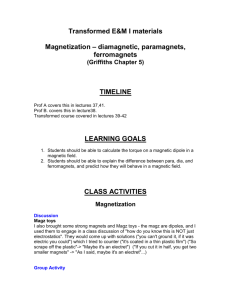Molecule-based Materials as model magnets: case studies on
advertisement
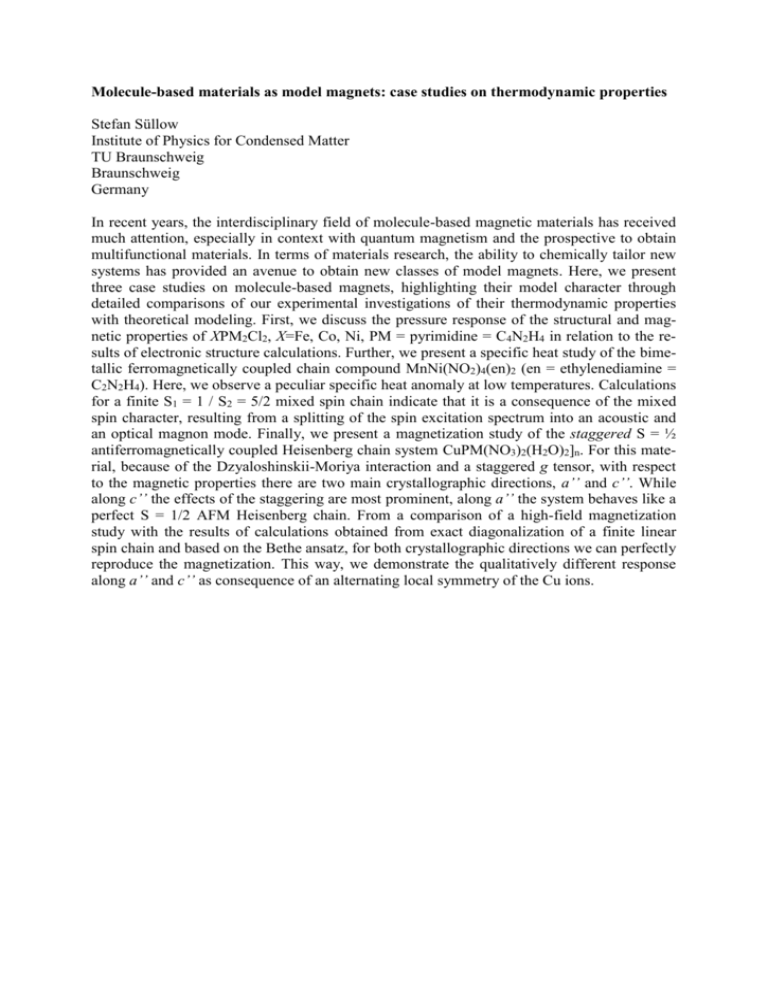
Molecule-based materials as model magnets: case studies on thermodynamic properties Stefan Süllow Institute of Physics for Condensed Matter TU Braunschweig Braunschweig Germany In recent years, the interdisciplinary field of molecule-based magnetic materials has received much attention, especially in context with quantum magnetism and the prospective to obtain multifunctional materials. In terms of materials research, the ability to chemically tailor new systems has provided an avenue to obtain new classes of model magnets. Here, we present three case studies on molecule-based magnets, highlighting their model character through detailed comparisons of our experimental investigations of their thermodynamic properties with theoretical modeling. First, we discuss the pressure response of the structural and magnetic properties of XPM2Cl2, X=Fe, Co, Ni, PM = pyrimidine = C4N2H4 in relation to the results of electronic structure calculations. Further, we present a specific heat study of the bimetallic ferromagnetically coupled chain compound MnNi(NO2)4(en)2 (en = ethylenediamine = C2N2H4). Here, we observe a peculiar specific heat anomaly at low temperatures. Calculations for a finite S1 = 1 / S2 = 5/2 mixed spin chain indicate that it is a consequence of the mixed spin character, resulting from a splitting of the spin excitation spectrum into an acoustic and an optical magnon mode. Finally, we present a magnetization study of the staggered S = ½ antiferromagnetically coupled Heisenberg chain system CuPM(NO3)2(H2O)2]n. For this material, because of the Dzyaloshinskii-Moriya interaction and a staggered g tensor, with respect to the magnetic properties there are two main crystallographic directions, a’’ and c’’. While along c’’ the effects of the staggering are most prominent, along a’’ the system behaves like a perfect S = 1/2 AFM Heisenberg chain. From a comparison of a high-field magnetization study with the results of calculations obtained from exact diagonalization of a finite linear spin chain and based on the Bethe ansatz, for both crystallographic directions we can perfectly reproduce the magnetization. This way, we demonstrate the qualitatively different response along a’’ and c’’ as consequence of an alternating local symmetry of the Cu ions.





